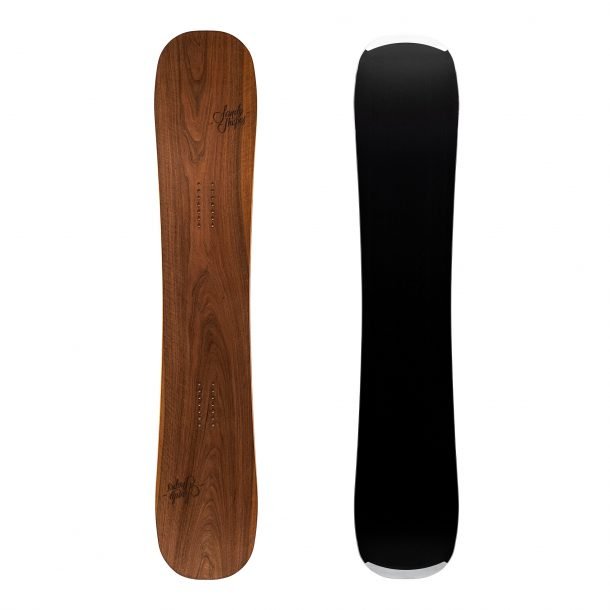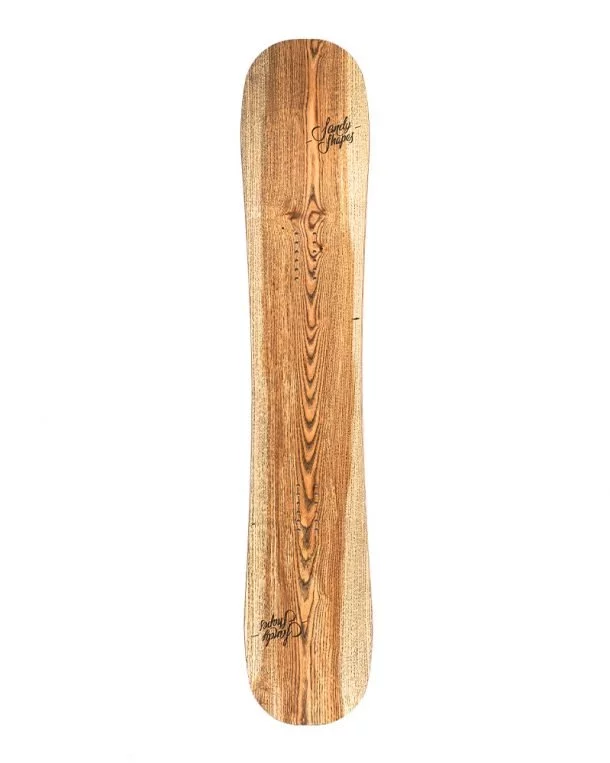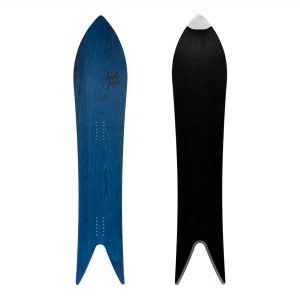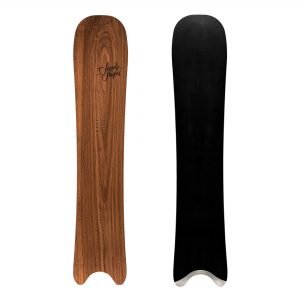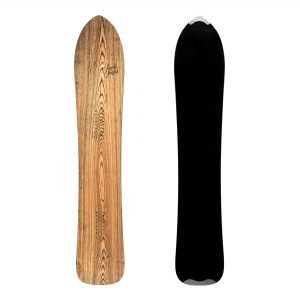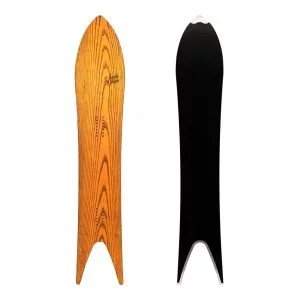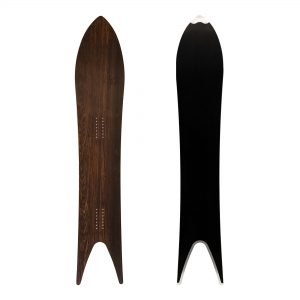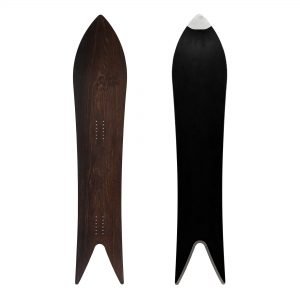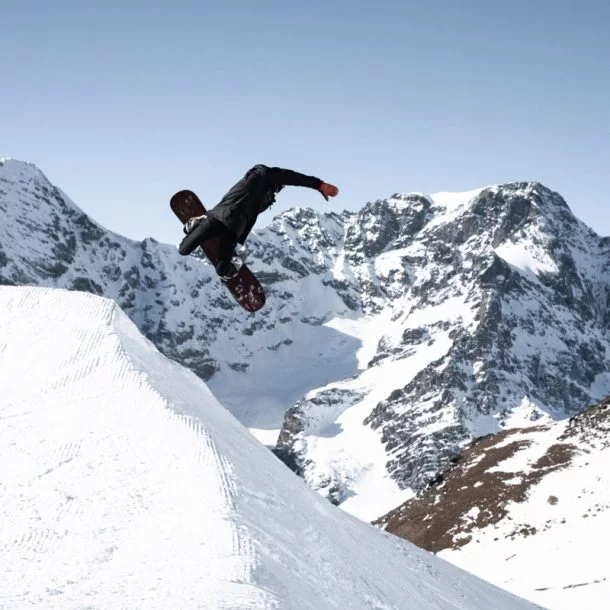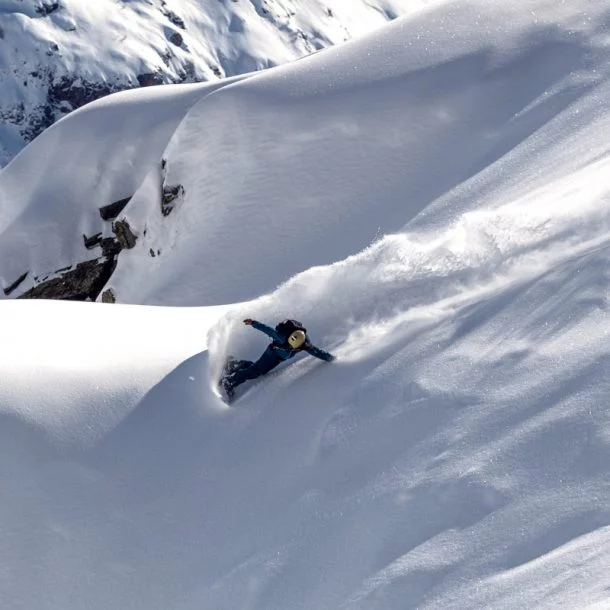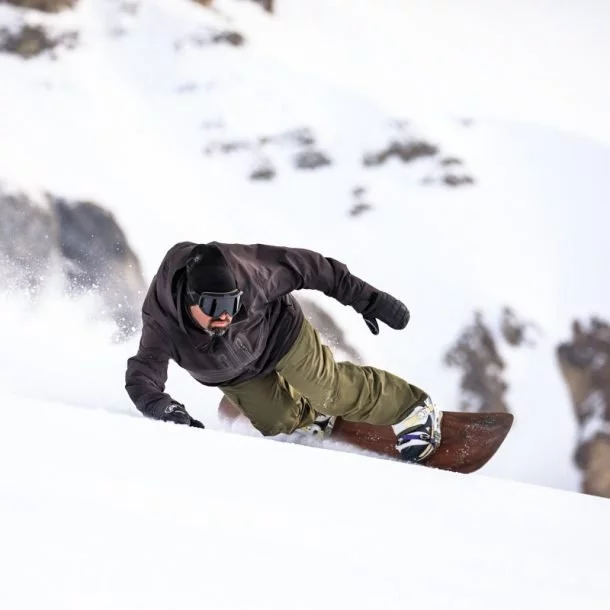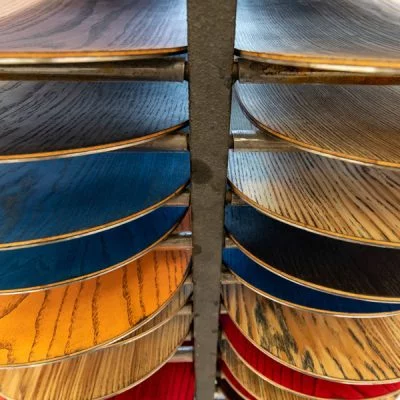Push Your Turns to the Limit
Carving Snowboards
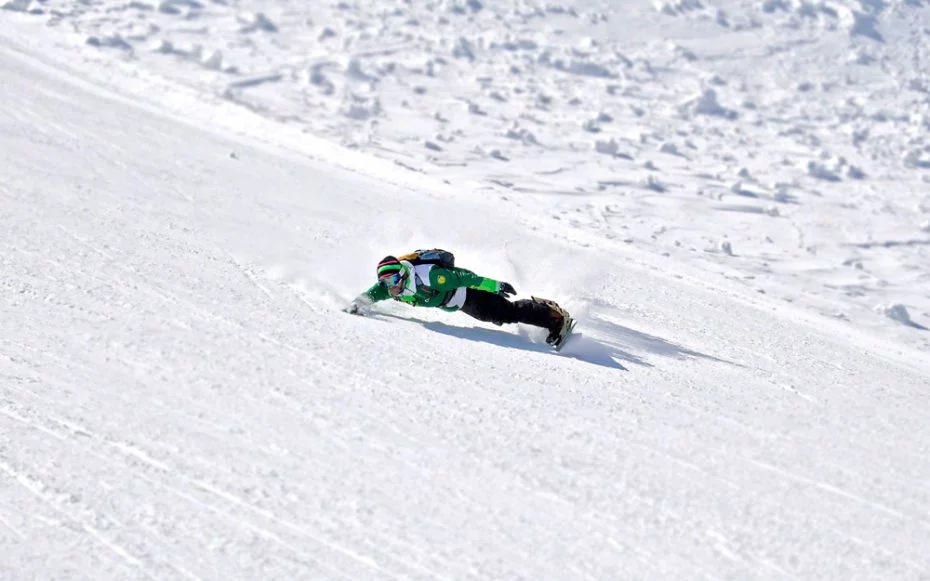
Choose your Sandy Shapes Carving Snowboard
Carving on a snowboard is an artform that has been around since the early days of the sport, and it probably still is the most technical discipline in snowboarding.
A snowboarder devoted to carving turns knows exactly what he/she wants from its snowboard of choice: a rigid yet dynamic board with positive camber, directional shape, large side-cut ratio for wide turn and a reasonably stiff core. These boards are made out of stronger woods to increase its responsiveness. The good news is that you came to the right place!
All of our boards are softboot carving snowboards.
What is Snowboard Carving
To carve means to turn by using only the edge shape (side-cut) of the board; it’s a fundamental snowboarding skill to master before moving to other technical disciplines like riding powder, halfpipes, or bigger kickers.
Snowboard carving consists of linking carved turns, pushing the limits of the centrifugal force to the point where you can literally lineup your body with the ground by holding on only to the snowboard’s edge and your hands or stretched-out forearm. For this reason, it is also known as “extreme carving” or “euro-carve”.
Despite what you may think, carving as a discipline was originally pioneered by snowboarders before skiers; remember that only hardboot snowboards and bindings were available at the beginning of the sport. Nowadays, all-mountain softboot carving snowboards offer a more versatile but still high-performing experience.
I spent the ’90s competing as a racing athlete first, and as a coach afterward. I know exactly how important the turning ability is in snowboarding, and that knowledge is the starting point for every Sandy Shapes board design and choice of materials.
Once you can master your turns, there’s no limit to what you will be able to do on a snowboard. Get ready to change your gloves and jacket pretty often.

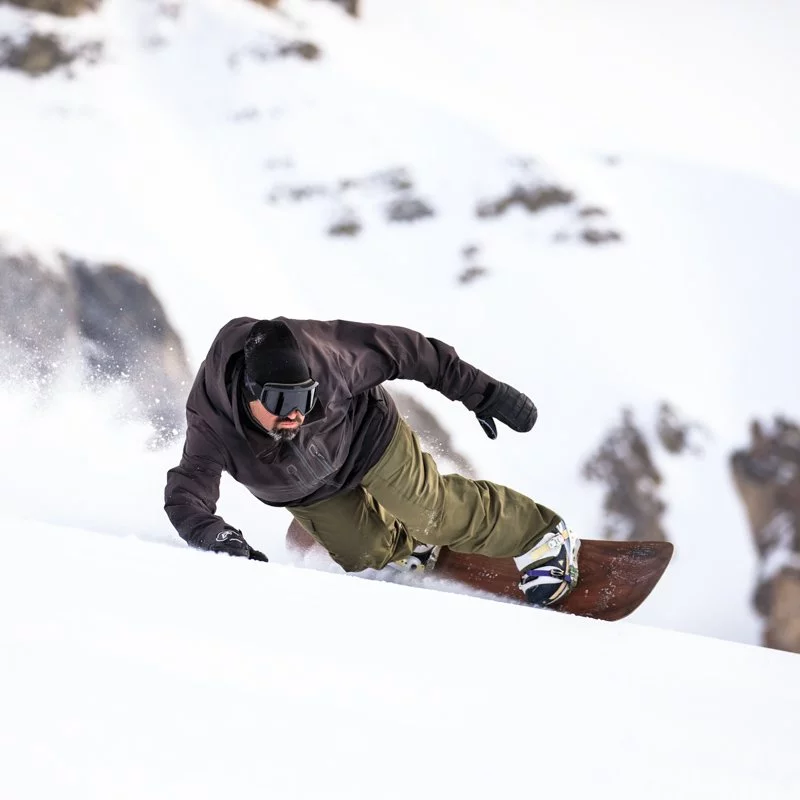
HOW TO CHOOSE THE BEST CARVING SNOWBOARD FOR YOU
Carving snowboards are designed for leading turns on groomed slopes thanks to a structured construction and a medium-stiff flex. This guarantees an excellent grip and allows you to maintain high speeds without losing stability.
These are the key factors to consider when choosing your Carving Snowboard:
Camber
Camber is the profile of choice for carving, guaranteeing the best edge grip on hardpack, also when riding at higher speeds.
Directional Shape
Directional snowboards have been developed to give their best in one direction. The tip is longer and wider than the tail, while the bindings are moved backward (set-back). The outcome is a more intuitive turn initiation and better control at high speed.
Most of our carving snowboards have a directional shape, but there are some exceptions, like our versatile model: Zingara!
Woodcore
The high-quality stiffer, and stronger woods used for the Sandy Shapes snowboards assure that our carving boards are responsive and lively in every turn. Read more down below about our “positive” and “negative” core profiles.
SANDY SHAPES’ MICROCAMBER
In our Microcamber profile, the arch extends in the binding area, becoming flat before reaching the tip and tail, then it rises up with a very wide radius.
It’s a highly responsive and accurate profile for those who want a great edge grip on hard snow, and a powerful board when ollieing.
This profile is recommended for carving addicted, as well as for more experienced riders.

ZINGARA
Our twin-tip carving board
A one of a kind all-mountain carving twintip, with incredible flotation and a high edge grip. A progressive flex combined with a modern microcamber and a chamfered nose and tail shape make it suitable for any snow condition and riding style, from extreme carving to powder. It will satisfy even the most demanding riders.
ZINGARA
153 – 159 – 161 wide

POSITIVE OR NEGATIVE?
Our “Positive Core” profile is characterized by a progressive increase in thickness that starts from the tip and tail to reach the maximum height under the feet, keeping it constant at the center of the board. This profile gives life to powerful, stable and fast snowboards.

On the other hand, our “Negative Core” has a reverse thickness increased in correspondence of the feet, with thinned ends and center. This increases the sensitivity under the feet and permit a better leg independence. Great for making wider boards more manouvrable as well.
On the other hand, our “Negative Core” has a reverse thickness increased in correspondence of the feet, with thinner ends and center. This increases the sensitivity under the feet and allows a better leg independence. Great for making wider boards more manoeuvrable as well.


ADVANCED SNOWBOARD CARVING TRICKS
Challenge yourself by adding some carving tricks in-between your radical turns!
Tail & Nose Rolls:
With a nose roll or tail roll, you can quickly change your riding stance by pivoting on your nose or tail and keep riding on the opposite edge.
Revert Carve:
The Revert Carve is a spectacular carved turn where you suddenly change the edge and keep riding switch. Keep your body twisted and look at the new direction from behind your back to style it out!
Front-to-front:
With a “front to front,” you perform a 180° flip by jumping off and landing to your toeside edge, right before initiating a carved front turn.
Back-to-Back:
A “back to back” is the same as the “front to front” but using your backside edge. It is a bit more difficult because you will have to perform a backside carved turn afterwards.
Flips:
Is your front-to-front / back-to-back game solid? Move one step further and try to send a 360° or 540° flip taking off and landing solely on one edge!
ALL OUR SOFTBOOT CARVING SNOWBOARDS
ALL THE CATEGORIES
Freeride, Freestyle, Carving or All-Mountain, whatever your snowboarding style is, we got you covered.

